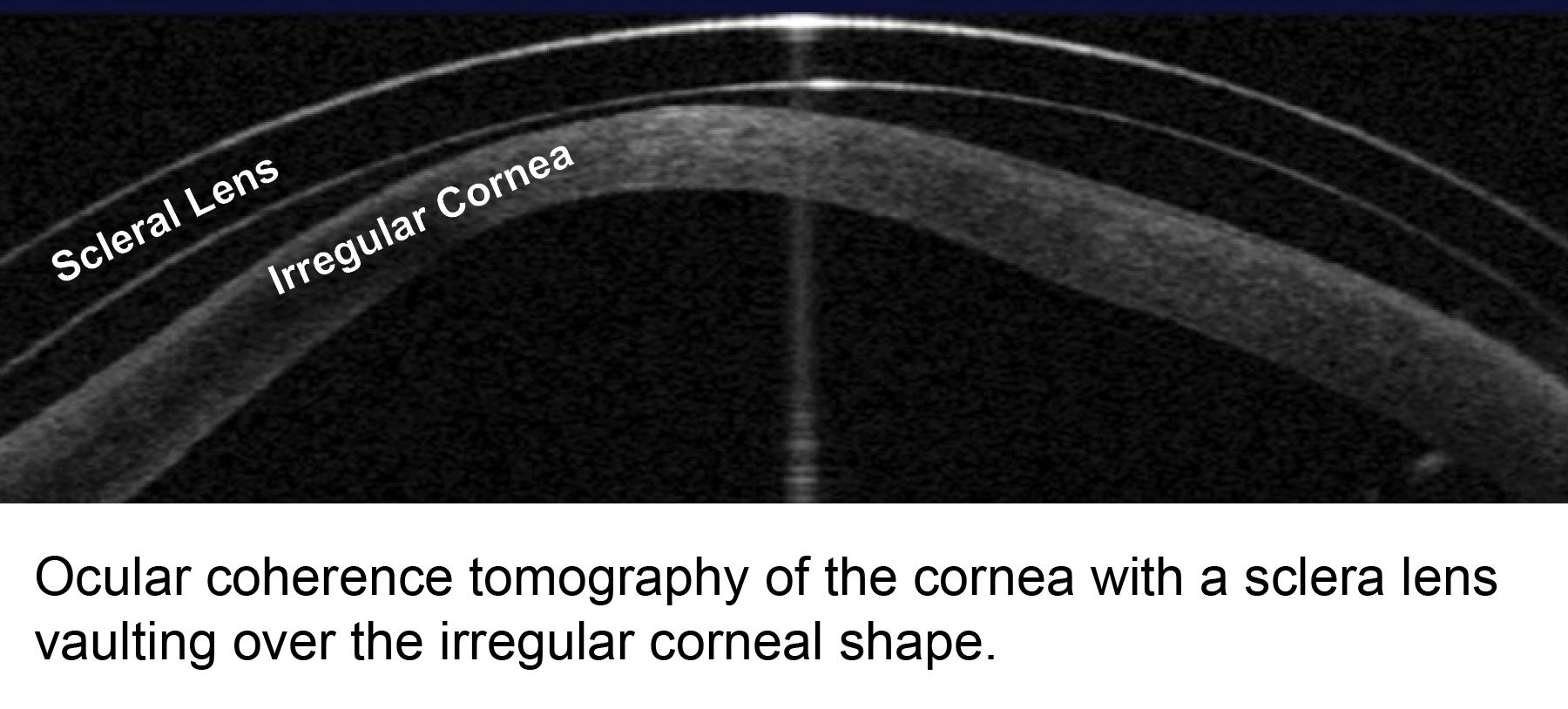What is an ocular coherence tomographer (OCT)?
Optical coherence tomography (OCT) is a non-invasive imaging test. OCT uses light waves to take cross-section pictures of your retina (back of eye) or cornea (front of eye).
With OCT, your optometrist can see each of the retina’s distinctive layers. This allows us to map and measure their thickness. These measurements help with diagnosis. They also provide treatment guidance for glaucoma and diseases of the retina. These retinal diseases can include age-related macular degeneration (AMD) and diabetic eye disease. When any abnormalities are detected the patient is referred to an ophthalmologist.In our practice fitting of scleral lenses is common, by using the OCT we can customize a scleral lens according to the patient’s eye, delaying the need for corneal transplants in patients with keratoconus.
Ocular coherence tomography allows the practitioner to objectively assess the central and peripheral lens fit, and alter the lens design until perfection is achieved. Preventing any future complications due to a wrong lens fit (please see image below).

How the OCT works?
You will sit in front of the OCT machine and rest your head on a support to keep it motionless. The equipment will then scan your eye without touching it. Scanning takes about 5 – 10 minutes.
What pathology we can pick up with the OCT?
OCT is useful in diagnosing many eye conditions, including: macular hole, macular pucker, macular edema, age-related macular degeneration, glaucoma, central serous retinopathy, diabetic retinopathy, vitreous traction ect. OCT is often used to evaluate disorders of the optic nerve as well. The OCT exam helps us to see changes to the fibers of the optic nerve. For example, it can detect changes caused by glaucoma.
OCT relies on light waves. It cannot be used with conditions that interfere with light passing through the eye. These conditions include dense cataracts or significant bleeding in the vitreous.